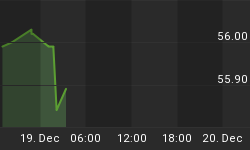
www.cartoonstock.com
The S&P 500 posted a fresh 52-week high on Wednesday, January 26, 2011, and possibly (at time of writing) on Thursday, January 27 as well.
As already shown in my last posting (see ... What a Difference a Fresh 52-Week High Makes ...), the S&P 500 at a fresh 52-week high was regularly indicative for a continuation of the then recent up-move over the course of the then following five sessions in the past, but another impressive seasonality caught my eye today.
Table I below shows all occurrences (since 1930) and the S&P 500′s performance over the course of the then following 1 to 5 sessions in the event the S&P 500 closed at a fresh 52-week high on the 3rd or 4th last session of January in the past (like on Wednesday, January 26, 2011, and /or on Thursday, January 27), which was already triggered on Wednesday's close independently from what might happen over the remainder of Thursday's session (approximately 1.5 hours left at time of writing).

+ no close below trigger day's close during period under review
- no close above trigger day's close during period under review
I think the respective probabilities and odds don't require much commentary. The S&P 500 closed higher on the 2nd last and the last session in January on 11 out of 14 occurrences, and four days later (the 2nd session in February) on all occurrences, with one exception only five sessions later.
In addition, the S&P 500
- never closed lower -0.59%+ below the 3rd last session of January over the course of then then following five sessions on all 14 occurrences, but was trading 1.0%+ four sessions later on 9 out of those 14 occurrences , and
- did not look back and did not post a single close below the trigger day's close on 9 out of 14 occurrences.
But another setup (independently from the FOMC announcement session and/or a 52-week high) will probably trigger a short-term bullish setup as well. Provided no sell-off during the remainder of Thursday's session, table II below hows all occurrences (since 1930) and the S&P 500′s performance over the course of the then following 1 to 5 sessions in the event the S&P 500 was up week-to-date and month-to-date on the 3rd last session of January in the past.

+ no close below trigger day's close during period under review
- no close above trigger day's close during period under review
Quite impressive again, despite a respectable sample size of 34 occurrences (years). When the S&P 500 was up week-to-date and month-to-date in the past,
- the S&P 500 closed higher three, four and five sessions later on more or less 3 out of every 4 occurrences (75% of the time),
- was up 1.0%+ three and four sessions later (the first and second session of February) on 14 and 17 occurrences, but down -1.0%+ on only 1 and 3 occurrences respectively,
- the S&P 500 did not look back and did not post a single close below the trigger day's close on 16 out of 34 occurrences (or almost 50% of the time), but did not post a single close above the trigger day's close only once, and last but not least
- downside potential over the course of the then following five sessions was regularly limited (max. loss -1.61%).
Conclusions:
January's turn-of-the-month seasonality shows an impressive bullish bias in the event the S&P 500 closed at a fresh 52-week high on the 4th or 3rd last session of January, and /or was up week-to-date and month-to-date on the 3rd last session of January in the past. Therefore: the short-term trend is still up.
Successful trading,
















